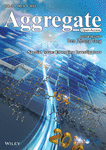Journal list menu
Export Citations
Download PDFs
FRONT COVER
Front Cover: Charge generation in organic solar cells: Journey toward 20% power conversion efficiency
- First Published: 26 December 2022
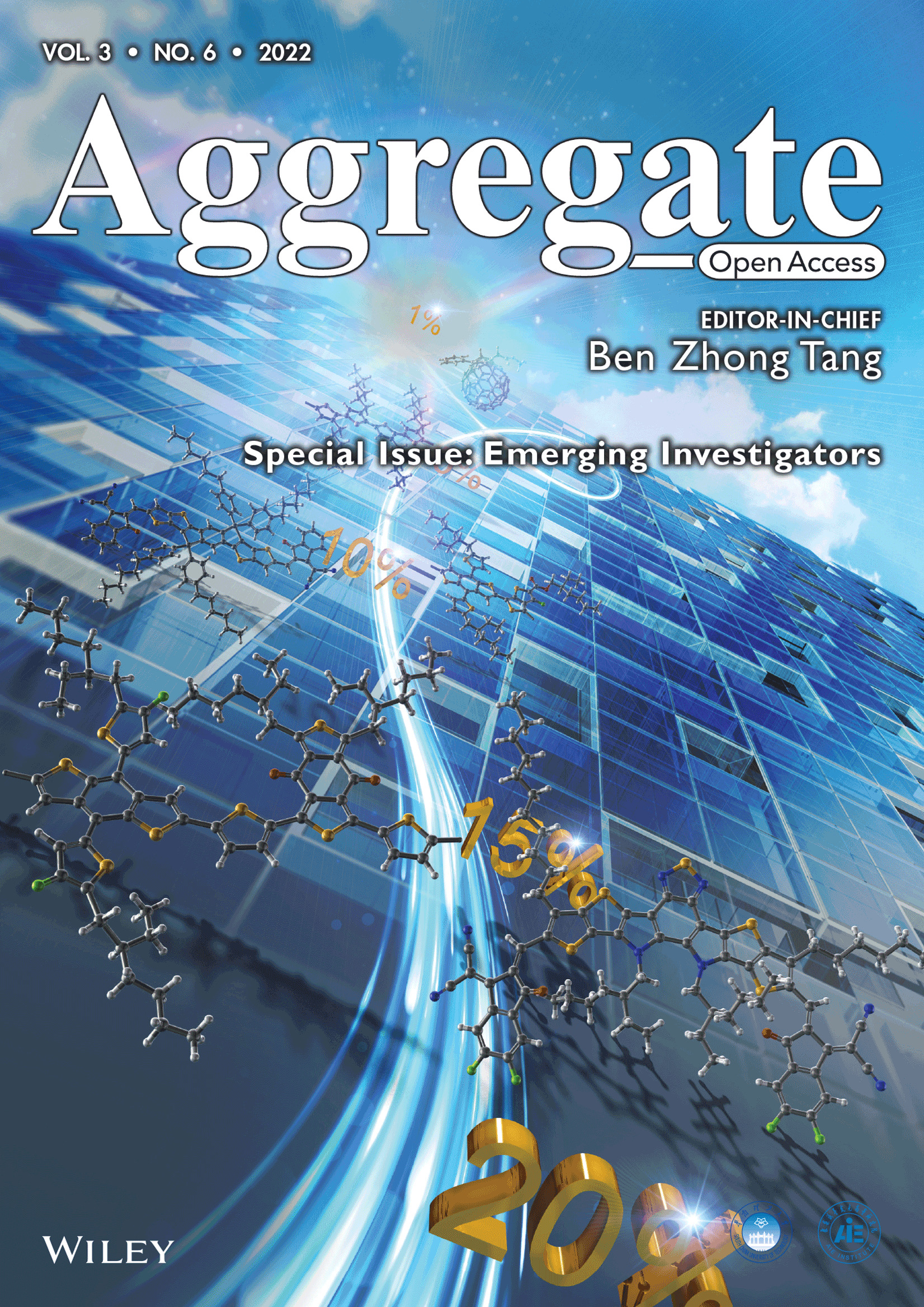
Owing to the enormous contributions of many researchers, the power conversion efficiencies of organic solar cells (OSCs) now exceed 19%. In this review (e280), a photophysicist's views of charge generation in OSCs including exciton diffusion, charge transfer at donor:acceptor interface, and long-range charge dissociation as well as future research directions for realizing further improvements are discussed.
INSIDE FRONT COVER
Inside Front Cover: Thermo-responsive topological metamorphosis in covalent-and-supramolecular polymer architectures
- First Published: 26 December 2022
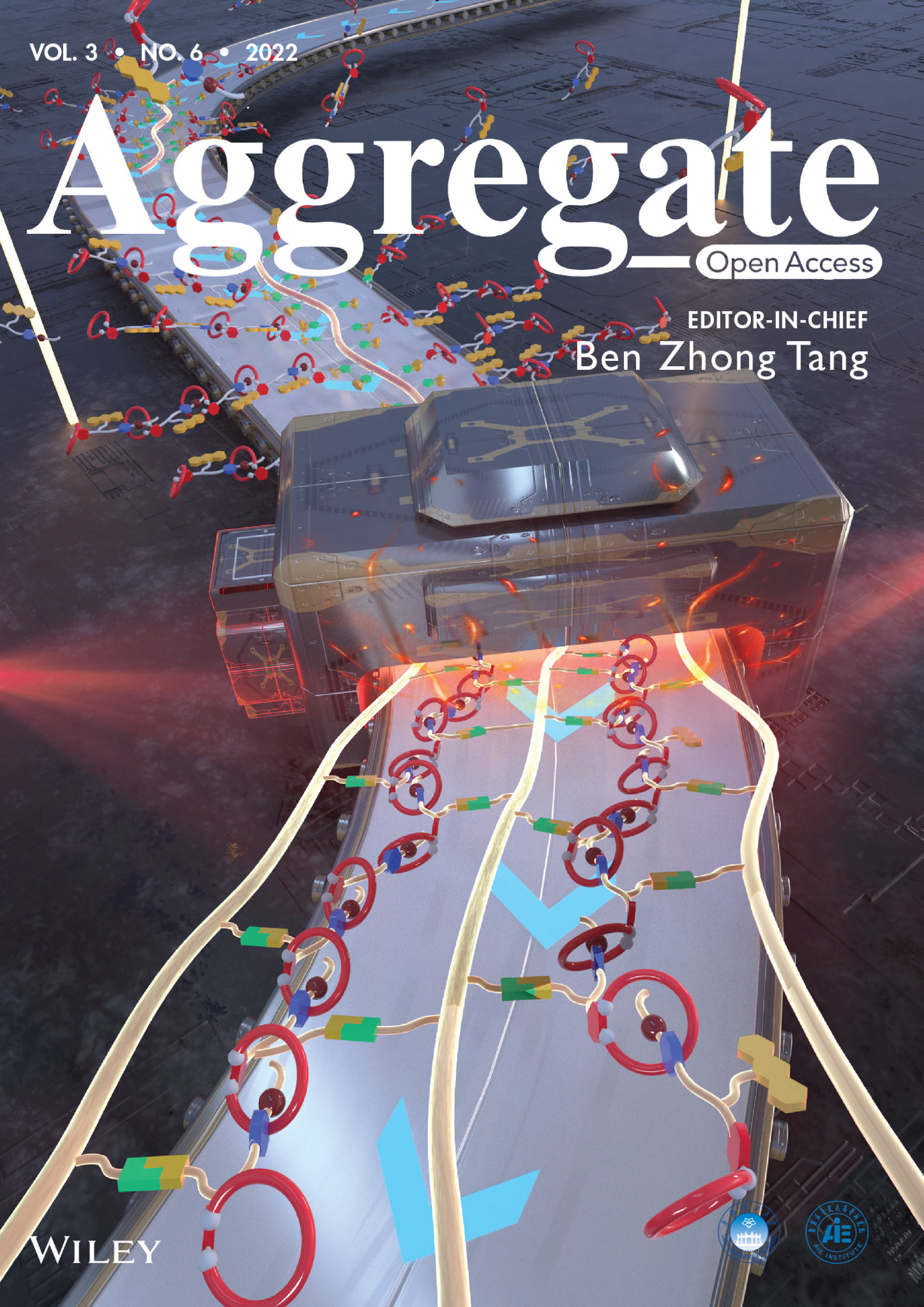
Abundant topological architectures are the basis of polymeric diversification. In this article (e206), Yan and co-workers couple the covalent polymer and supramolecular polymer in a single system to realize an intrinsical macromolecular metamorphosis from grafted polymer to crosslinked network. The transformation elicited a shift from stiff but brittle material to a strong yet tough one.
INSIDE BACK COVER
Inside Back Cover: Recent progress in low-cost noncovalently fused-ring electron acceptors for organic solar cells
- First Published: 26 December 2022

Toward future commercial applications of organic solar cells (OSCs), organic photovoltaic materials that enable high efficiency, stability, and low cost should be developed. In article number e281, Sun and co-workers comprehensively summarize works about noncovalently fused-ring electron acceptors with low-cost and good stability from molecular design, efficiency optimization to material cost analysis.
BACK COVER
Back Cover: AIE-based drug/gene delivery system: Evolution from fluorescence monitoring alone to augmented therapeutics
- First Published: 26 December 2022
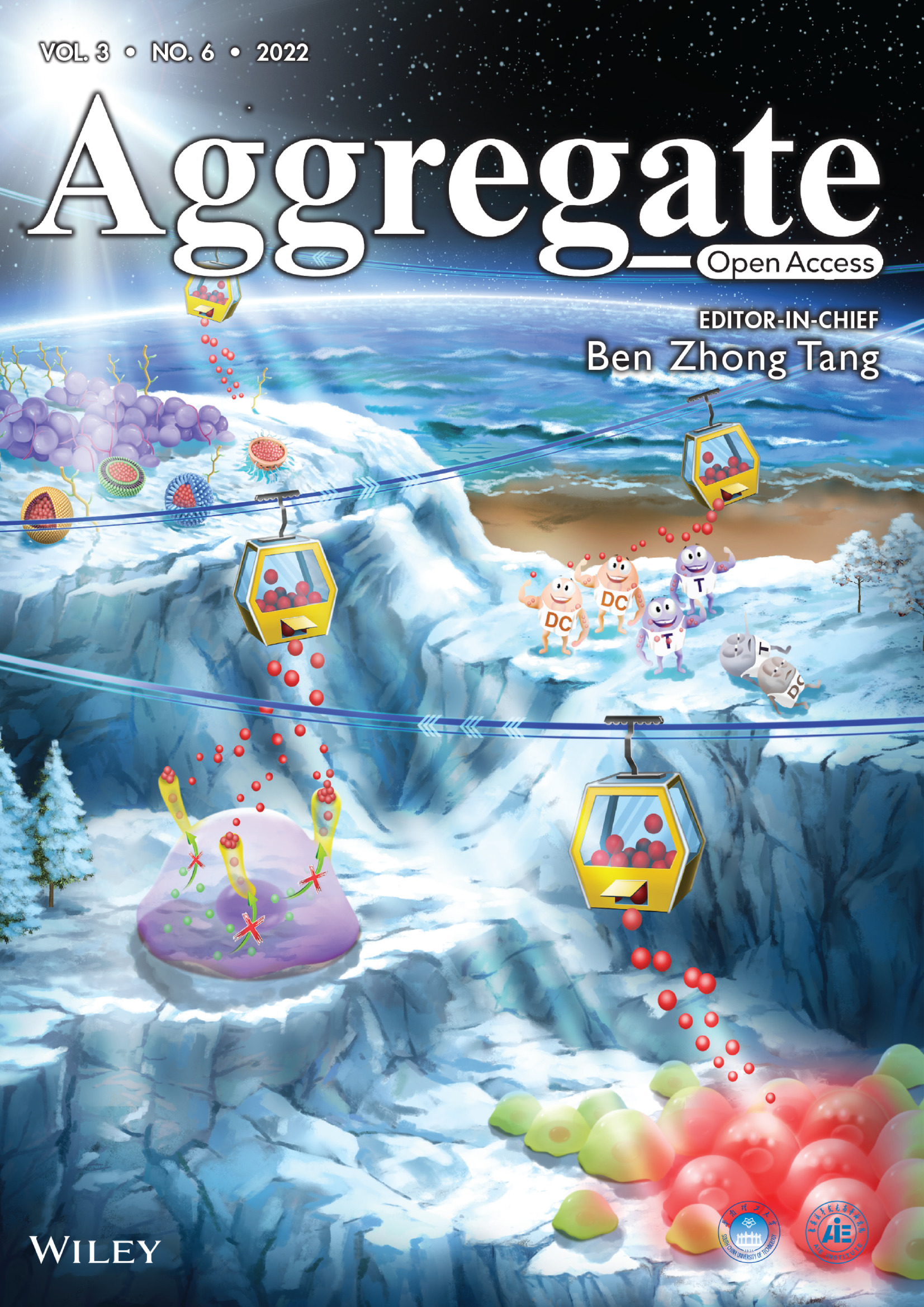
In the evolution of AIE-based drug and gene delivery systems, the light-up AIEgens start in real-time monitoring of the delivery processes and evaluation of therapeutic responses of drug/gene; The delicate structural design of AIEgens to form high-level carriers remarkably enhances the drug/gene delivery efficiency; Further, endowed with multifunctionalities, AIEgens are synergized in multimodality therapy to achieve augmented therapeutic efficiency(e282).
ISSUE INFORMATION
EDITORIAL
RESEARCH HIGHLIGHTS
Preparation of coemissive luminescent nanoparticles in continuous-flow microreactors for efficient light-harvesting systems
- First Published: 05 December 2022
REVIEWS
Charge generation in organic solar cells: Journey toward 20% power conversion efficiency
- First Published: 26 October 2022
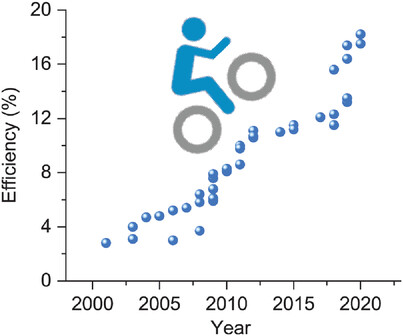
Herein, a photophysicist's views on charge generation in organic solar cells is discussed. Recent steady-state and time-resolved spectroscopic studies regarding the exciton diffusion to donor:acceptor interfaces, charge transfer at the donor:acceptor interface, and long-range spatial dissociation of charge transfer states are highlighted. Based on these findings, future research directions are discussed.
Optical properties of gold nanoclusters constructed from Au13 units
- First Published: 31 May 2022
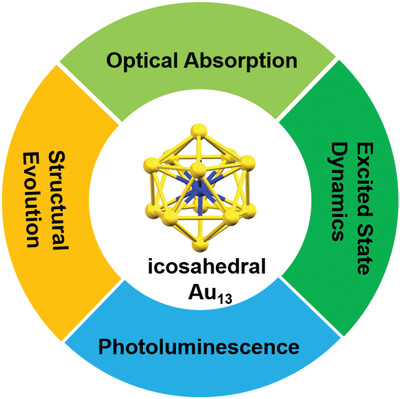
This review summarizes various optical properties of gold nanoclusters that consist of Au13 motifs. The structural evolution from Au13 to Au25, Au37, and Au60 is illustrated with increasing number of the Au13 building blocks. The review on the photo-physics of Au13 family provides a comprehensive understanding of Au13-assembled nanoclusters, which is helpful for boosting their potential applications in the future.
Recent progress in low-cost noncovalently fused-ring electron acceptors for organic solar cells
- First Published: 13 October 2022

Noncovalently fused-ring electron acceptors (NFREAs) have attracted much attention because of the advantage of simple structure, facile synthesis, and low cost, which have great potential for commercial applications in organic solar cells. This review presents the recent development of NFREAs for organic solar cells and focuses on the effect of their chemical structure on the molecule conformation, aggregation, and packing structure.
AIE-based drug/gene delivery system: Evolution from fluorescence monitoring alone to augmented therapeutics
- First Published: 11 October 2022

The aggregation-induced emission luminogens (AIEgens) propel the development of drug and gene delivery systems. The lit-up AIEgens first serve for real-time monitoring of the delivery processes and evaluation of therapeutic responses of drug/gene. The delicate design of AIEgens to form high-level structural carrier remarkably enhances the delivery efficiency. Further, endowed with multi-properties and functionalities, AIEgens are synergized with the delivered drug/gene for multimodality therapy.
Ion−π interactions for constructing organic luminescent materials
- First Published: 24 October 2022

The construction of organic fluorescence and room temperature phosphorescence materials by using ion−π interactions including anion−π interactions and cation−π interactions is presented in this minireview. The applications of these ion−π type organic luminescent materials in bioimaging, imaging-guided anticancer, and antibacterial treatment are also summarized. The perspective and challenges for constructing ion−π type organic luminescent materials are discussed.
Aggregation in carbon dots
- First Published: 21 November 2022
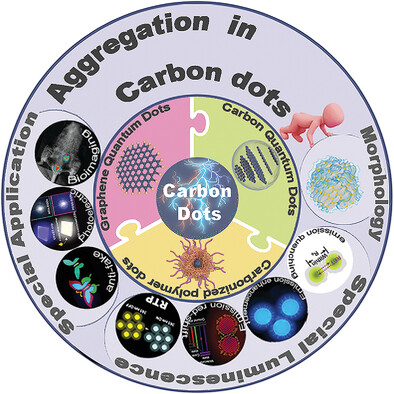
Carbon dots (CDs) has excellent photoluminescence properties. Aggregation plays an important role in both the formation of CDs and their fluorescence, yet is seldom studied in detail. This review aims to fill this knowledge gap. We first discuss how aggregation leads to the formation of different types of CDs, and the impact on morphology, luminescence, and applications.
Molecular determinants for the layering and coarsening of biological condensates
- First Published: 10 December 2022
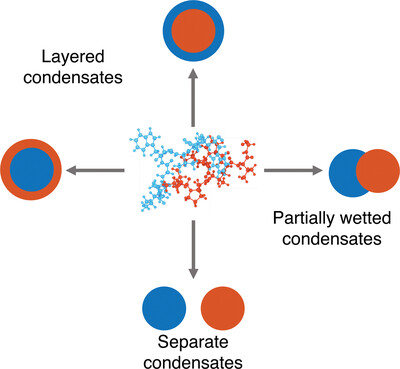
The diagram illustrates the four possible outcomes upon mixing two immiscible droplets, which are dictated by the interfacial tension between the two droplets and between the droplets and the solvent phase. Generalizations of this principle can be used to understand biocondensate organization and its connection with the interactions among the molecular components.
RESEARCH ARTICLES
Thermo-responsive topological metamorphosis in covalent-and-supramolecular polymer architectures
- First Published: 30 May 2022

We report a thermo-responsive topological metamorphosis in covalent-and-supramolecular polymer (CSP) architectures wherein supramolecular graft polymer (SGP) transforms into supramolecular polymer network (SPN) based on collaborative dynamic covalent bond chemistry and host−guest chemistry. The transformation elicited a shift from stiff but brittle material to a strong yet tough one.
Systematic study on fabrication of hollow poly(vinyl cinnamate) particles by particulate interfacial photocrosslinking
- First Published: 30 June 2022
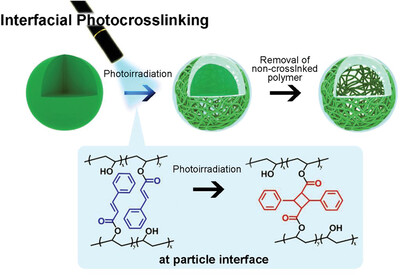
Hollow polymer particles are widely used in various industries as coatings and cosmetics. Herein, we successfully fabricated hollow polymer particles from poly(vinyl cinnamate) (PVC) particles through interfacial photocrosslinking. Furthermore, we systematically studied the effects of solid contents of parent particles, photoirradiation time, photoirradiation power, and polymer chain length on shell thickness of hollow PVC particles fabricated by interfacial photocrosslinking.
Cu–Au nanoparticles produced by the aggregation of gas-phase metal atoms for CO oxidation
- First Published: 24 September 2022
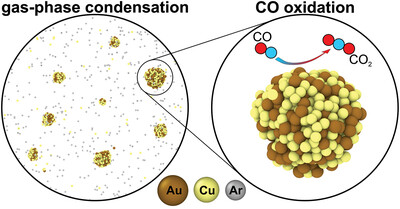
The aggregation of gas-phase Cu and Au atoms into Cu–Au nanoparticles with non-equilibrium structures and compositions is studied using molecular dynamics. Density functional calculations reveal the significant effect of the structure of the obtained realistic models of Cu–Au nanoparticles on their CO and O binding properties as well as their CO oxidation activity.
Interrogating the impact of aggregation-induced emission nanoparticles on in vitro protein stability, ex vivo protein homeostasis, and in vivo biocompatibility
- First Published: 06 October 2022
Dual-templating surface gel into thin SSZ-13 zeolite membrane for fast selective hydrogen separation
- First Published: 30 September 2022
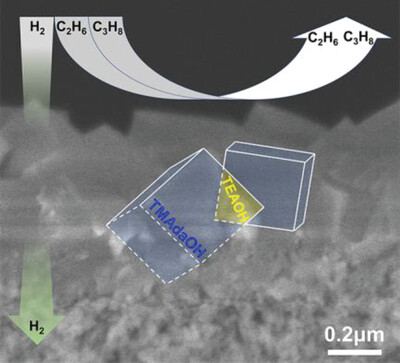
Submicron SSZ-13 zeolite membranes in high continuity were synthesized from dual-templated surface gels. The templates directed and regulated the crystallization of the SSZ-13 zeolite, and the surface gel determined the thickness of the membrane. The synthesized membranes possessed good hydrogen separation performances in terms of permeance and separation factor for H2/C2H6 and H2/C3H8 mixtures.
Manipulation of clusteroluminescence in carbonyl-based aliphatic polymers
- First Published: 14 October 2022
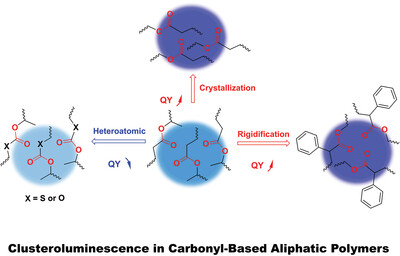
Six nonconjugated carbonyl-based aliphatic polymers with different heteroatoms and steric hindrances are synthesized and demonstrated with clusteroluminescence (CL). The results suggest that the additional heteroatoms will weaken the CL, but introducing the rigidification and crystallization effects can effectively improve the CL efficiency.
Stabilizing and structuring oil–oil interfaces by molecular brush surfactants
- First Published: 09 November 2022
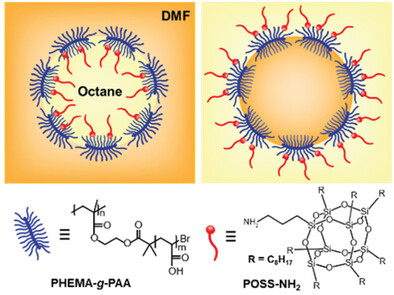
Using the co-assembly of polar molecular brushes and nonpolar oligomeric ligands, molecular brush surfactants (MBSs) form and assemble in situ at the DMF–octane interface via electrostatic interaction/hydrogen bonding. The binding energy of MBS to the interface is sufficiently high to support the compression, then to structure liquids. With MBSs as emulsifiers, different types of emulsions can be easily prepared, opening a new pathway to stabilize all-oil constructs.




